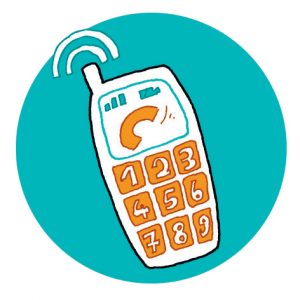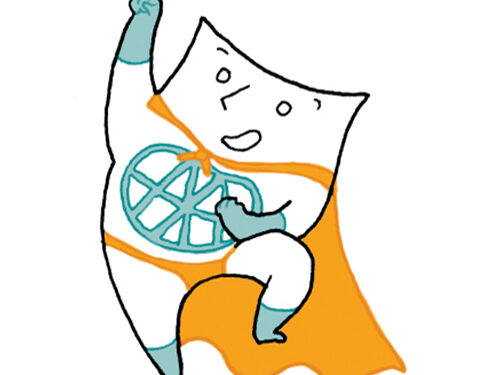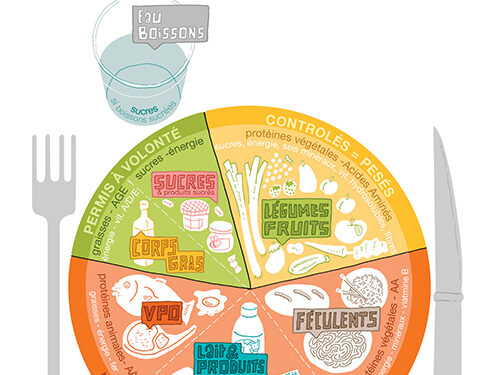Managing complex situations
Anorexia, food refusal
Infants and/or young children may have periods of food refusal without being ill:
- if during a meal, he refuses his plate, do not be “anxious” and do not offer the plate for 1 hour or more, x times reheated, or accompanied by “devious means” to make him eat: Television, games, parade of people, forcing etc…. On the contrary, take away his plate, do not offer him dessert, he will then be hungry and will eat much better at the next meal. If he senses your concern, his attitude is likely to become entrenched;
- do not give in by offering low-protein foods instead to satisfy his appetite;
- spread the parts of leucine not eaten at one meal to the other meals of the day;
- to get him to eat and to “please him”, do not offer him “forbidden” foods in small quantities: he cannot understand the “limited permit”, or the permit one day and the ban on the same food the next. Moreover, he will have a “tiny” quantity! And you will have to compensate for his appetite with low-protein foods that he will get tired of.
It is important that mum and dad have the same attitude because if your child sees opposite reactions, the period of anorexia and/or refusal may not be transitory.
Make sure that the amount of amino acidAmino acids are molecules that combine to form proteins. 20 amino acids make up the proteins of the human body. Of these, 8 are essential (our body cannot synthesise them, they must be supplied by the diet): isoleucine, leucine, lysine, methionine, phenylalanine, threonine, tryptophan, valine.
Arginine and histidine are semi-indispensable. In fact, only infants need to take them from their food.
Cysteine, glycine and tyrosine may be indispensable for certain populations mix you give is correct; too much of it can overwhelm your child’s appetite.
If your child has a small appetite, the dietitian will work with you to change the mix to be lower in calories.
Rejection of the amino acidAmino acids are molecules that combine to form proteins. 20 amino acids make up the proteins of the human body. Of these, 8 are essential (our body cannot synthesise them, they must be supplied by the diet): isoleucine, leucine, lysine, methionine, phenylalanine, threonine, tryptophan, valine.
Arginine and histidine are semi-indispensable. In fact, only infants need to take them from their food.
Cysteine, glycine and tyrosine may be indispensable for certain populations mixes
Your child may refuse the amino acidAmino acids are molecules that combine to form proteins. 20 amino acids make up the proteins of the human body. Of these, 8 are essential (our body cannot synthesise them, they must be supplied by the diet): isoleucine, leucine, lysine, methionine, phenylalanine, threonine, tryptophan, valine.
Arginine and histidine are semi-indispensable. In fact, only infants need to take them from their food.
Cysteine, glycine and tyrosine may be indispensable for certain populations mixture. This may be due to the method of preparation:
- too diluted, the volume may be too large,
- conversely, if it is too thick, it may be too concentrated.
If there is repeated irregularity in taking the mixture, let alone refusal, this will inevitably lead to an imbalance in his blood levels. Your child needs to understand that this mixture is essential for him to be well and that it is an integral part of his diet: it must be taken every day.
Refusal to take the mixture may be encouraged by the parents’ anxious attitude towards taking the mixture, because you know it is important. If this is too difficult for you, ask the psychologist for help; she will reassure and advise you. When faced with these difficulties (both the refusal of fruit and vegetables and the refusal of the amino acidAmino acids are molecules that combine to form proteins. 20 amino acids make up the proteins of the human body. Of these, 8 are essential (our body cannot synthesise them, they must be supplied by the diet): isoleucine, leucine, lysine, methionine, phenylalanine, threonine, tryptophan, valine.
Arginine and histidine are semi-indispensable. In fact, only infants need to take them from their food.
Cysteine, glycine and tyrosine may be indispensable for certain populations mixture), do not give in, it is important for him. If the diet is poorly applied on a regular basis, with discordant attitudes, the consequences will be rapid intoxication, with elevated blood levels, foreshadowing various difficulties later on.
Intercurrent illnesses
In children with leukemia, diet deviations, pilfering or intercurrent illnesses lead to risks of acute decompensation as soon as the leucine level rises above a certain threshold.
In these cases, it is necessary to prevent acute attacks by adhering to the regime, without respite, and by adapting it in the case of particular circumstances that may raise these levels. Therefore, be alert to situations that may trigger decompensation.
Situations that may trigger decompensation
- fever, nasopharyngeal infections, colds, bronchitis,
- piercing teeth, earaches,
- digestive disorders: vomiting, diarrhoea,
- anorexia, fasting,
- error and/or deviation,
- refusal of the amino acidAmino acids are molecules that combine to form proteins. 20 amino acids make up the proteins of the human body. Of these, 8 are essential (our body cannot synthesise them, they must be supplied by the diet): isoleucine, leucine, lysine, methionine, phenylalanine, threonine, tryptophan, valine.
Arginine and histidine are semi-indispensable. In fact, only infants need to take them from their food.
Cysteine, glycine and tyrosine may be indispensable for certain populations mix, - no weight gain, let alone weight loss,
- vaccinations,
- general anaesthesia, surgery,
- accident, trauma,
- chronic leucine deficiency,
- Valine and/or Isoleucine deficiency.
Decompensation can also occur without any obvious cause. It is important to know the clinical warning signs:
- In infants, the first sign is difficulty in feeding, vomiting, and a limp, sleepy and tired child.
- In the older child, gestures are imprecise, walking is unsteady, as if the child were “drunk”. The child’s character may be altered, he or she may be sleepy or, on the contrary, agitated.
At school, they may have articulation difficulties, graphic difficulties, switch letters in a word, or ‘skip’ a word during dictation. They may be unusually nauseous or anorexic. In the event of one of these signs or in the event of a situation at risk of decompensation :
- do an acetest (in the urine) to see if your child is “catabolizing” (destroying its own proteins and therefore releasing amino acids);
- consult your doctor to look for a possible infectious cause;
- adapt his diet if his appetite is preserved and the clinical signs are minor during vaccinations or in the event of a perfectly well tolerated fever and while waiting for the result of the blood level measurement, make a “semi-emergency diet” if it has been prescribed by the Health Centre.
- have your plasmaThe liquid part of blood, in which the blood cells are suspended. leucine, valine and isoleucine levels checked as a matter of urgency.
However, in case of higher fever and illness, the diet should be modified as prescribed. The semi-emergency or emergency diet consists of reducing or stopping the amount of natural proteins in the diet, while increasing the energy intake (enriching the dishes with sugars and fats, using low protein products, etc.). It may be useful to split meals to encourage food intake and limit vomiting. The amino acidAmino acids are molecules that combine to form proteins. 20 amino acids make up the proteins of the human body. Of these, 8 are essential (our body cannot synthesise them, they must be supplied by the diet): isoleucine, leucine, lysine, methionine, phenylalanine, threonine, tryptophan, valine.
Arginine and histidine are semi-indispensable. In fact, only infants need to take them from their food.
Cysteine, glycine and tyrosine may be indispensable for certain populations mixture should be continued during these periods.

ALWAYS call your referring HOSPITAL
The dietician or doctor will give you the results of the blood levels and tell you how long to keep the crash diet and how to supplement (or not) with valine and/or isoleucine. This diet should not be continued beyond 3 to 4 days.
It should not be applied very repeatedly at home, without the advice of the referring doctors, otherwise you will get the opposite of what you want. Indeed, if at the slightest fever, “to do the right thing” and to prevent the blood leucine level from rising, you apply the “emergency” diet, therefore without leucine, the average cumulative intake will be insufficient to ensure correct growth.
If after this time (or of course before) and despite these precautions, the clinical signs persist or worsen (disturbed consciousness, vomiting or complete refusal to eat), take your child to hospital without delay.
In hospital, it may be necessary to start Continuous Flow Enteral Nutrition (CFEN). You should have an emergency diet to be delivered through a nasogastric tube in your documents. It should be updated regularly according to your child’s age.
If your child is in a local hospital, the hospital may not have the products needed to make the emergency diet in stock. Remember to provide all the necessary products, including the amino acidAmino acids are molecules that combine to form proteins. 20 amino acids make up the proteins of the human body. Of these, 8 are essential (our body cannot synthesise them, they must be supplied by the diet): isoleucine, leucine, lysine, methionine, phenylalanine, threonine, tryptophan, valine.
Arginine and histidine are semi-indispensable. In fact, only infants need to take them from their food.
Cysteine, glycine and tyrosine may be indispensable for certain populations mixture and the “recipe” for the emergency diet, or ask the ward to bring the diet. This NEDC is usually sufficient to address the metabolic imbalance.
If, on the other hand, there are serious digestive disorders and in particular incoercible vomiting, it may be necessary to carry out all or part of the treatment by intravenous infusion.
“Beware: late management of decompensation can have serious consequences.”
In conclusion, your child’s care and future will be optimised if the fundamental rules are respected: “controlled” intake of natural proteins and therefore leucine, intake of a mixture of essential amino acids, maintenance of a sufficient energy intake thanks to low-protein foods. Situations where there is a risk of acute decompensation should be anticipated if possible. Do not hesitate to share your questions, whatever they may be, or any concerns you may have with the referring healthcare team: their role is to care for your child, which necessarily involves regular communication with you.




